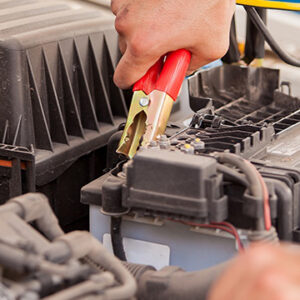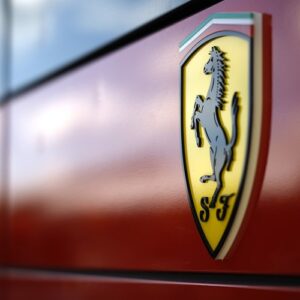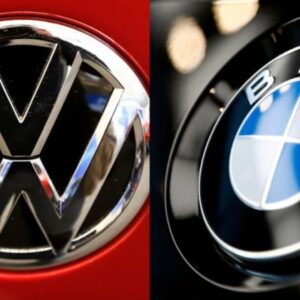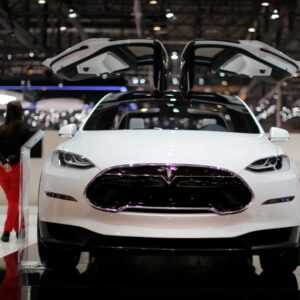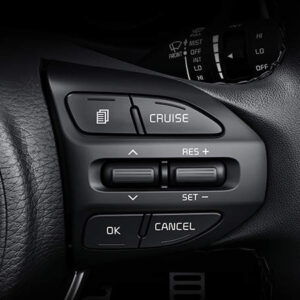What is Formula one? What time is f1 race? If you’re new to Formula 1, you may have a few questions about the sport and how our action-packed tour of the world is staged year in, year out. Well, we’ve got you covered. In an all-in-one explainer, we take you through the basics from how the championship was formed to the circuits visited, the drivers behind the wheel and the teams involved up and down the pit lane…
What is Formula one?
Formula One (more commonly known as Formula 1 or F1) is the highest class of international racing for open-wheel single-seater formula racing cars sanctioned by the Fédération Internationale de l’Automobile (FIA).
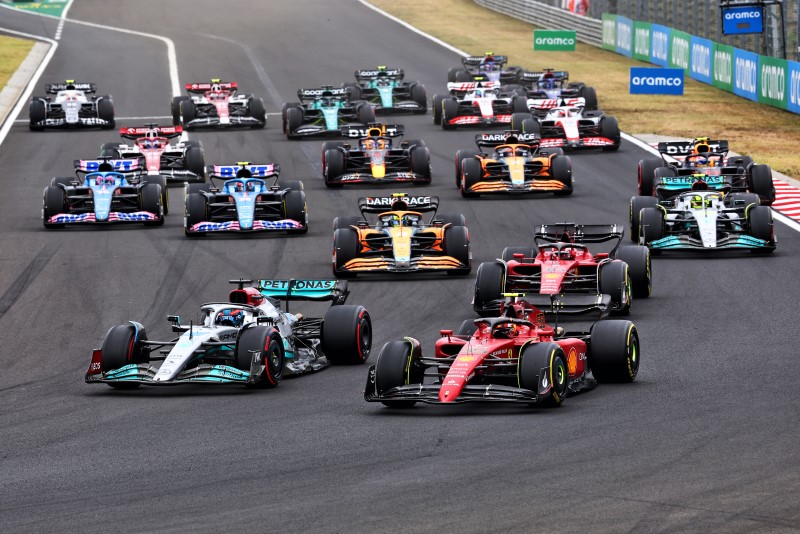
The FIA Formula One World Championship has been one of the premier forms of racing around the world since its inaugural season in 1950. The word formula in the name refers to the set of rules to which all participants’ cars must conform.
A Formula One season consists of a series of races, known as Grands Prix. Grands Prix take place in multiple countries and continents around the world on either purpose-built circuits or closed public roads. Formula One is one of the premium forms of racing around the world and draws huge audiences.
A driver participating in a Formula One race should hold a valid Super Licence issued by the FIA. The performance of the drivers and the constructors of the car are evaluated at the end of each race by a points system. At the end of a season, the FIA aggregates the points scored by each and awards two annual World Championships: one each for the drivers and the constructors.
What is a Formula 1 qualifying session?
F1 Qualifying Sessions are when the drivers strive to set the fastest lap times which will determine their starting place on the starting grid. In Q1, the first qualifying session, the slowest five drivers are allotted the last five places on the grid. The remaining 15 drivers (there are only 20 cars in a race) decide the next worst five starting positions in Q2.
In Q3 (Qualifying 3), the last ten drivers contest for the best place on the starting grid. The drivers get 15 minutes to set their fastest lap times. The driver with the fastest lap time is awarded the pole position on the starting grid. The remaining drivers are ranked according to their fastest lap times and will take their designated places at the start of the race.
A set of soft tyres are allocated to drivers qualifying for Q3. These tyres must be returned by the drivers after the qualifying round. The driver that reached Q3 must start the race with the tyres that they used in Q2 unless the track conditions and the weather require otherwise. All other drivers are free to choose the tyres that they want at the start of the race.
If a car does not meet FIA scrutiny, the driver will be barred from qualifying sessions. The car has to start from the last position on the grid for the race. Any penalties during qualifying are applied at the end of qualifying. The penalty will determine the driver’s starting position in the race. Infractions may include changing a gearbox or an engine component.
Where does F1 race?
As mentioned, Formula 1’s inaugural season featured seven rounds, spread out from May to September and predominantly staged in Europe (the exception being the Indianapolis 500 in the United States, which most F1 drivers sat out).
New European events arrived as F1 developed, with the following decades bringing adventures to South America, North America, Africa, Asia, Australia and, most recently, the Middle East – well and truly putting the ‘world’ in world championship.
Silverstone, Monaco, Spa-Francorchamps and Monza are the four circuits that still feature on the F1 calendar from that very first campaign, although plenty of safety-based changes and track layout modifications have been made since then.
When did Formula 1 start?
Formula 1 was formed as a world championship competition back in 1950, with the first-ever race held at the Silverstone Circuit – a former Royal Air Force station – in the United Kingdom on May 13 of that year.
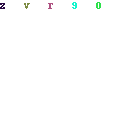
Six more events were staged in a season which saw Alfa Romeo driver Giuseppe ‘Nino’ Farina become the sport’s first world champion – edging out team mates Juan Manuel Fangio and Luigi Fagioli.
While motorsport had been taking place since the late-1800s, with Grand Prix events arriving and growing in popularity across the following decades, 1950 marked the start of the official F1 championship that remains to this day.
Why is it called Formula 1?
As for why Formula 1 is called Formula 1, this can be broken up into two parts.
First up, the ‘Formula’ is a set of rules – covering car design, engine size, component usage and much, much more – that all competitors must abide by. Secondly, the ‘One’ or ‘1’ simply denotes that it is the premier formula.
How can I watch F1?
Formula 1 is watched by huge numbers of fans around the world. This includes the hundreds of thousands who flock through the gates at each Grand Prix to catch the action in-person and the millions more who follow it from afar.
If you wish to travel to a Grand Prix yourself, a wide range of packages to suit different needs and budgets are available via our official F1 Tickets, F1 Hospitality and F1 Experiences portals.
Alongside this, our F1 TV subscriptions give you access to live coverage of every session at every Grand Prix weekend (in selected territories), along with a comprehensive back catalogue of historic races, documentaries and shows.
What safety precautions are in Formula 1?
While Formula One is one of the most entertaining sports to watch, it is also one of the most dangerous. Many high-speed accidents happen and most of the time, drivers walk away uninjured. This is due to different safety precautions that have been implemented over the years.

Drivers wear four layers of flameproof overalls, made of Nomex. Nomex is an artificial lab-tested fibre that has been tested against flames of 600 to 800 degrees. Drivers also wear a crash helmet which is extremely tough and strong. This is custom fit to protect drivers during an impact and to protect them from debris and flames.
The Halo is a protective barrier above the driver which prevents large objects and debris from entering the cockpit. The Halo is designed to protect the driver’s head from incoming objects or the floor if the car rolls. It was officially rolled out in 2018 as a mandatory feature in Formula One cars and has saved many lives since.
How does the F1 weekend work?
Formula 1’s standard weekend format takes place across three days: Friday, Saturday and Sunday.
Friday features two 60-minute practice sessions for teams to set up their cars and carry out a variety of runs on different fuel loads and tyre compounds, with a third practice hour following on Saturday for last-minute tweaks and learnings.
After final practice, drivers head into a three-stage qualifying session, with the slowest five drivers eliminated in an 18-minute Q1 phase, and five more in a 15-minute Q2 segment, which sets positions 20-11 on the grid prior to any penalties. A final 12-minute long Q3 settles the top 10 grid slots, along with the coveted pole position.
Sunday brings the race itself, where drivers battle it out to score points and grab a spot on the podium.
How long do F1 races last?
Formula 1 races generally last between an hour-and-a-half and two hours, though this can be impacted by Safety Car periods that slow the field down or red flags that halt the action – see the 2023 Australian Grand Prix as a prime example.
Each race on the calendar has a set number of laps based on the length of their respective circuit. The distance of each race is almost always equal to the fewest number of laps that exceed 305 kilometres. Monaco is an exception to the rule, where the race length is equal to the fewest number of laps that exceed a distance of 260km, given its street circuit nature and lower speeds.
What’s the F1 Sprint?
While we have covered the standard weekend format above, the F1 Sprint will feature at six events this season and adds another layer of excitement to proceedings.
F1 Sprint made its debut during the 2021 campaign, appearing at the British, Italian and Sao Paulo rounds, with the usual qualifying session shifted to Friday to set the grid for a new 100km dash on Saturday, which in turn set the grid for the main Grand Prix on Sunday.
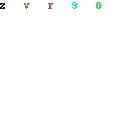
In 2023, the Sprints will be held in Azerbaijan (Baku City Circuit), Austria (Red Bull Ring), Belgium (Spa-Francorchamps), Qatar (Lusail Circuit), the United States (Circuit of The Americas) and Sao Paulo (Interlagos).
But there has also been a format change for this season – tweaks mean the Sprint will effectively become a standalone feature of race weekends when the format is used, with the outcome bearing no impact on the grid for the Grand Prix itself.
Fridays will now include a practice session followed by a standard qualifying session to set the grid for Sunday’s Grand Prix. Saturdays will see practice replaced by an additional, shorter qualifying session called the Sprint Shootout. This will set the grid for the subsequent 100km Sprint.
What are some definitions of technical Formula 1 words?
- Aerodynamics: This is the study of airflow over and around an F1 car.
- DRS: First introduced in 2011, this is an addition to the rear wing of the car. When a driver is close to the car in front, their rear wing will open to reduce drag and increase their ability to overtake.
- Carbon fibre: This is a strong, lightweight material which is often used in the bodywork of an F1 car. It is used because it is light but strong and can be easily moulded into any shape.
- Blistering: The consequence of a tyre overheating.
- Compound: Tread compound in the part of the tyre which comes into contact with the road. The ideal compound has maximum grip but is still durable.
- Degradation: A term used to describe the wear of a tyre which causes it to lose grip.
- Drag: The aerodynamic resistance experienced when a car travels.
- Formation lap: The lap before the start of the race when the cars do a lap to warm their tyres.
- Lock-up: When the driver brakes sharply which causes one or more tyres to ‘lock’ while the others keep moving.
- Marshal: A course official who oversees the safe running of the race.
- Pits: An area of the rack where the cars are brought for new tyres or fuel during, before or after the race.
- Qualifying: A session which takes place the day before the race in which drivers compete in to set the best time they can. This determines the starting grid for the race.
- Safety Car: A vehicle which is called from the pits to slow down the cars in the race.
- Porpoising: An aerodynamic phenomenon where cars bounce as they drive along the track.
What’s the difference between F1 and the FIA?
Formula 1 works closely with governing body the FIA to put on a show each year: hence the official name of ‘FIA Formula One World Championship’.
F1, more specifically Formula One Management (FOM), who are owned by United States-based media company Liberty Media, hold the sport’s commercial rights.
The FIA, founded in 1904, are the governing body for a host of motorsport competitions around the world, including F1. They oversee the technical, sporting and financial regulations, ensuring that competitors are sticking to the rules, and set stringent safety standards.
How do F1 cars work?
Thousands of parts are involved in creating some of the fastest and most advanced racing cars on the planet, spanning detailed bodywork, suspension elements, turbo-hybrid power units, eight-speed paddle shift gearboxes, 18-inch tyres and much more.
When the engine powers it into life, an F1 car essentially acts as an aeroplane flipped upside down, with front and rear wings – and everything in between – pushing the car onto the track and giving it incredible levels of grip through corners.
That said, F1’s current technical regulations are based around a ‘ground effect’ aerodynamic concept, with several carefully designed tunnels under the floor sucking the car to the track surface to generate even more downforce.
This, combined with simpler bodywork than previous years, means less ‘dirty air’ – or disrupted airflow – is created and allows cars to follow each other more closely, opening up additional overtaking opportunities and adding to the on-track spectacle.
What are F1 cars powered by?
As touched on, F1 cars are powered by turbocharged V6, 15,000 RPM engines, featuring kinetic and thermal energy recovery systems.
Today’s F1 power units comprise the following elements: the internal combustion engine (ICE), motor generator unit-heat (MGU-H), motor generator unit-kinetic (MGU-K), turbocharger, energy store (ES), control electronics (CE) and exhaust.
Over the course of the season, a driver may use no more than three ICEs, MGU-Hs, MGU-Ks and turbochargers, two energy stores and control electronics, and eight of each of the four elements that make up a set of exhaust systems – otherwise grid penalties will apply.
How many drivers and teams race in F1?
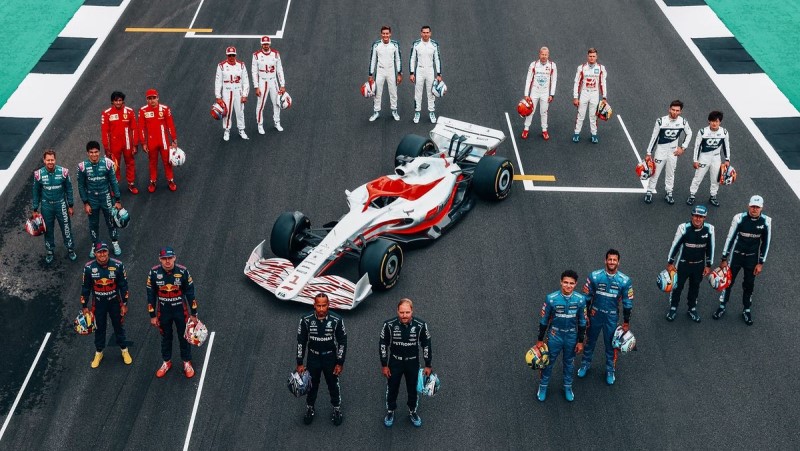
A total of 20 drivers and 10 teams make up the current F1 grid, with each outfit fielding two cars.
This ranges from teams who have been in F1 since the early decades, such as Ferrari and McLaren, or relative newcomers like Haas, who entered the sport ahead of the 2016 season.
In terms of the drivers, experience ranges from world champions Lewis Hamilton, Fernando Alonso and Max Verstappen to rookie racers Oscar Piastri, Nyck de Vries and Logan Sargeant.
Where are F1 teams based?
Most F1 team factories can be found in the United Kingdom, with seven operations calling England their primary home.
This includes a couple of caveats, such as Haas also having facilities in Italy (thanks to a component supply arrangement with Ferrari) and the United States (where their other motorsport activities are based), and Alpine supplementing their UK headquarters with a dedicated engine division in France.
As for the other three teams, Alfa Romeo are located in Switzerland, while Ferrari and AlphaTauri both operate out of Italy.
Who are the most successful F1 drivers of all time?
From F1’s all-time list of world champions, Hamilton shares the overall record of seven titles with Michael Schumacher. Hamilton claimed his first title with McLaren in 2008, before adding six more at Mercedes between 2014 and 2020, while Schumacher won the 1994 and 1995 crowns with Benetton, adding another five (in a row) at Ferrari from 2000 to 2004.
As it stands, Hamilton also holds the record for the most race victories, logging 103 to date, along with the most pole positions, also bagging 103 up to now.
Fellow multiple champions include Fangio, who racked up five titles in the 1950s, Alain Prost, who won four across the 1980s and 1990s, and the recently retired Sebastian Vettel, who collected a quartet of championships on the bounce from 2010 to 2013.
Ayrton Senna was a driver who looked poised to reach those numbers in his legendary F1 career, but a tragic accident at the 1994 San Marino Grand Prix left him with a tally of three, alongside several other famous names.
Max Verstappen is F1’s latest champion, winning the 2021 and 2022 titles with Red Bull, as he looks to make it three out of three in 2023.
Who are the most successful F1 teams of all time?
While an F1 drivers’ world championship was in place from the inaugural 1950 season, a constructors’ equivalent did not arrive until 1958, when Vanwall triumphed over Ferrari.
Since then, Ferrari have established themselves as the most successful team in terms of championship wins, collecting 16 constructors’ titles over the decades. Williams are next on the list with nine crowns, followed by McLaren and Mercedes on eight.
As for drivers’ titles, Ferrari lead the way on 15, with McLaren their nearest challengers on 12, ahead of Mercedes (nine), Williams (seven) and Lotus and Red Bull (six).
Ferrari have also racked up the most race victories, claiming 242 to date, followed by McLaren (183), Mercedes (125) and Williams (114), with Red Bull another team nearing a century of wins.
Above is information about What is Formula one? that we have compiled. Hopefully, through the above content, you have a more detailed understanding of What time is f1 race? Thank you for reading our post.
